Masking and Visitation Changes: Due to high rates of respiratory illnesses in our community, we’ve made changes to our masking and visitation guidelines. Learn more.

September 2022 Quarterly Progress Update (Q4)
A group of committed workforce members created the Health Equity and Anti-Racism Action Plan to prioritize the most powerful actions to address systemic racism within Seattle Children’s from late 2021 through 2024.
“Seattle Children’s strives to have a workforce that reflects the diverse patients and families it serves, including a representative leadership team and Board of Trustees. Research shows diverse representation improves health outcomes, patient and family experience, and innovation. The goal set in the Action Plan of 40% employee racial and ethnic diversity is currently being met. Numbers are moving in the right direction, but with data, there is always more to uncover. Now, we must aim higher and dig deeper. Seattle Children’s will continue looking at the layers of data that reveal where disparities continue to exist and where efforts must focus going forward.”
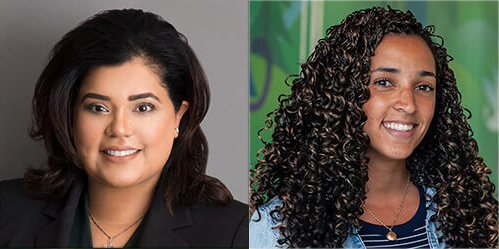
Read more of the introduction letter from Myra Gregorian, senior vice president and chief people officer and Alicia Adiele, senior director and chief diversity officer.
The Seattle Children’s Health Equity and Anti-Racism Action Plan has eight commitments and nine outcome measures for fiscal year 2022. Learn more about what the organization is committing to over the next few years and what progress is being made.
For more details, read the full report, in English or Spanish. You can also review reports from previous quarters.
A summary of our progress to date appears below.
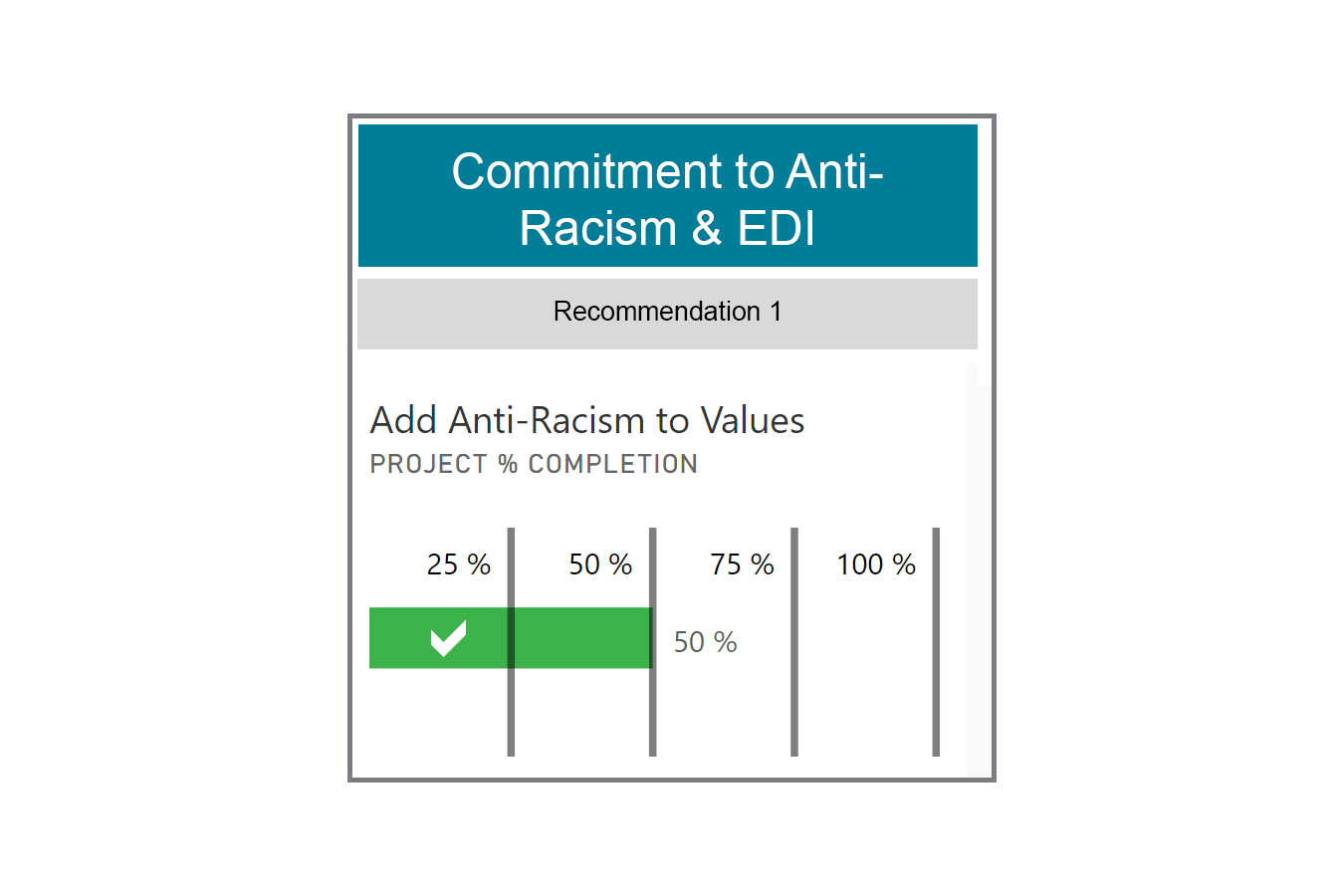
FY22 and FY23: Update Seattle Children’s values to include anti-racism to hold leaders and workforce accountable through the performance evaluation process.
After compiling feedback from the HEDI Council and Inclusion Network leaders, updates were made to values-based behaviors and leadership qualities to incorporate anti-racism. The updates were approved by the Executive Leadership Team in July. Progress towards this goal will continue into FY23, with a focus on accountability. The updated values-based behaviors and leadership qualities will be introduced in fall 2022 and incorporated in FY23 performance evaluations.
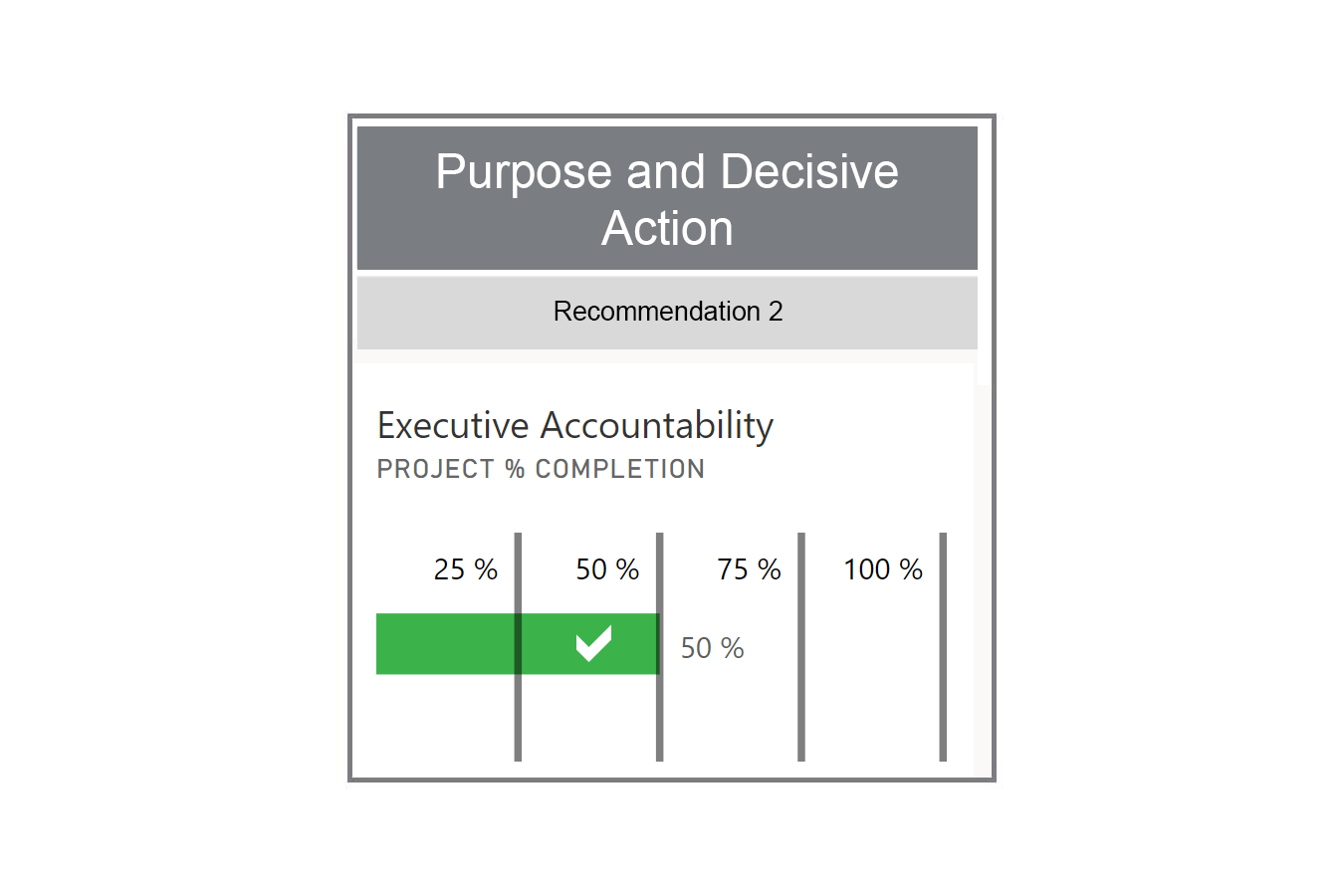
FY22: Link executive compensation to achievement of Action Plan outcomes.
The Seattle Children’s Hospital Board of Trustees (the Board) reviewed and adopted a revised equity-related executive compensation model, which includes four equity-related goals represented in the Action Plan. Final goal achievement will be determined on September 30, and executive compensation will be based upon those results. The Board also approved FY23 executive compensation goals in September, which will continue with the same model of 16% of executive compensation being linked to achievement of equity-related goals.
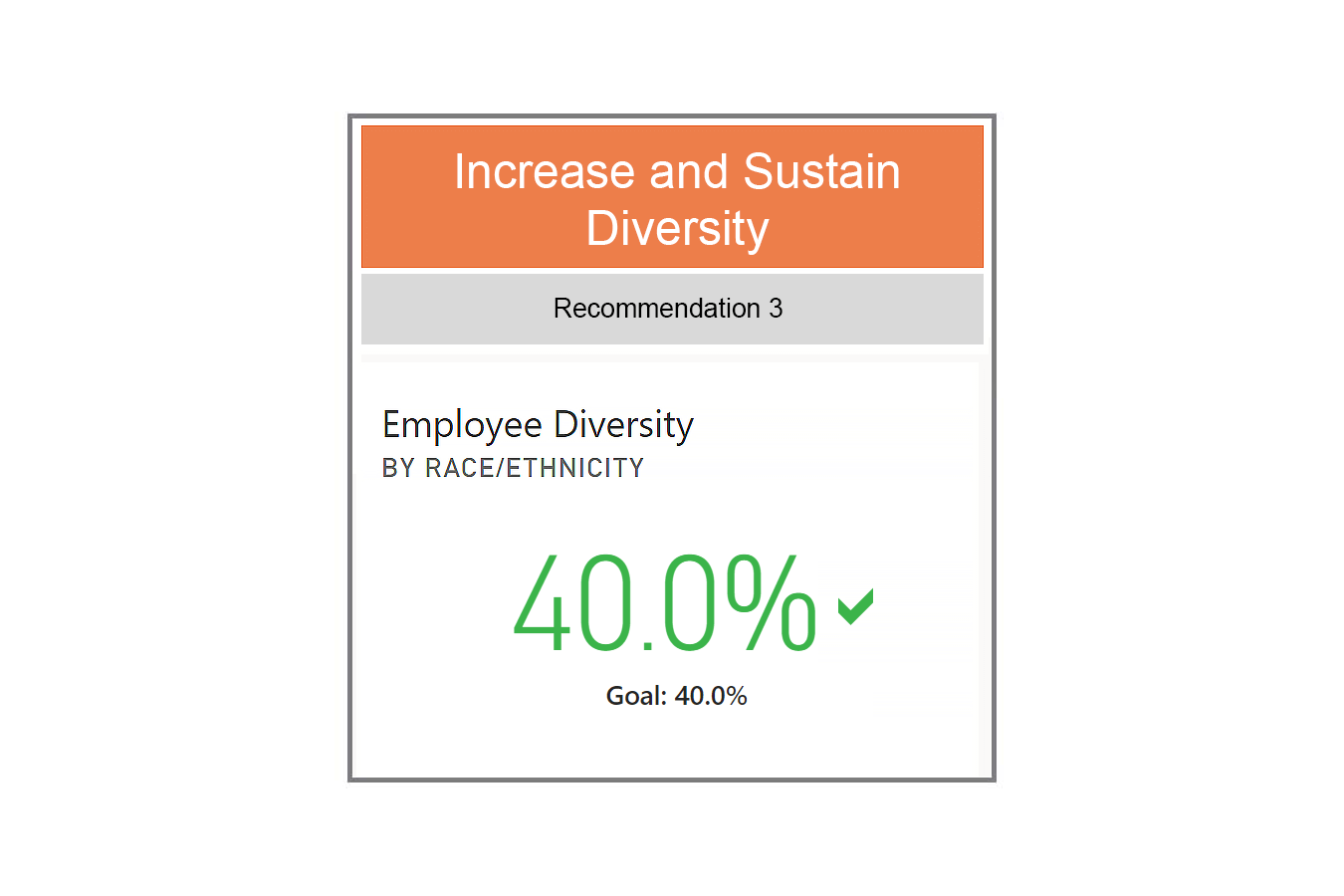
FY22: Increase employee diversity by race/ethnicity to 40%, to further reflect patient population.
The FY22 goal of 40% racial and ethnic diversity is tracked through quarterly milestones. The Q4 FY22 goal of 40% is trending positively toward the goal, with a current result of 40%. Ongoing work to increase employee diversity includes requiring hiring managers to attend inclusive and equitable recruitment training, redesigning the SeattleChildrens.org careers site and incorporating new diverse recruitment videos, publishing diversity analytics and highlighting Seattle Children’s Inclusion Networks.
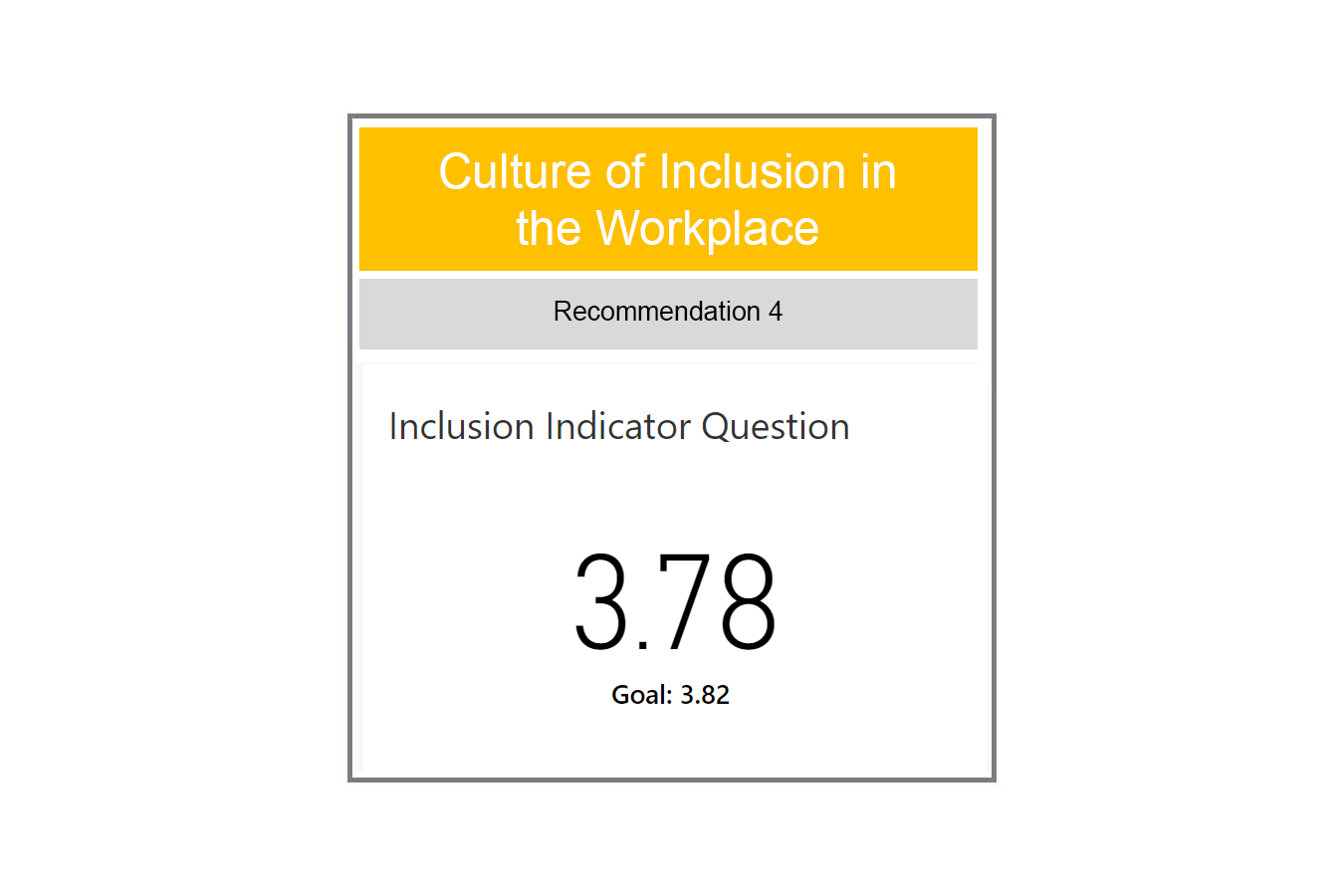
FY22: Improve scores on the Inclusion Indicator question “This organization values workforce members from different backgrounds” from 3.78 (FY21 baseline) to 3.82 out of 5. This represents a clinically significant increase.
The most recent Workforce Engagement Survey, conducted in fall 2021, provides a baseline score for this question of 3.78 out of 5. The target score for FY22 is 3.82 (out of a best possible score of 5), which represents a clinically significant increase. The Workforce Engagement Survey, including the question, “This organization values workforce members from different backgrounds,” will be administered to the workforce in September 2022.
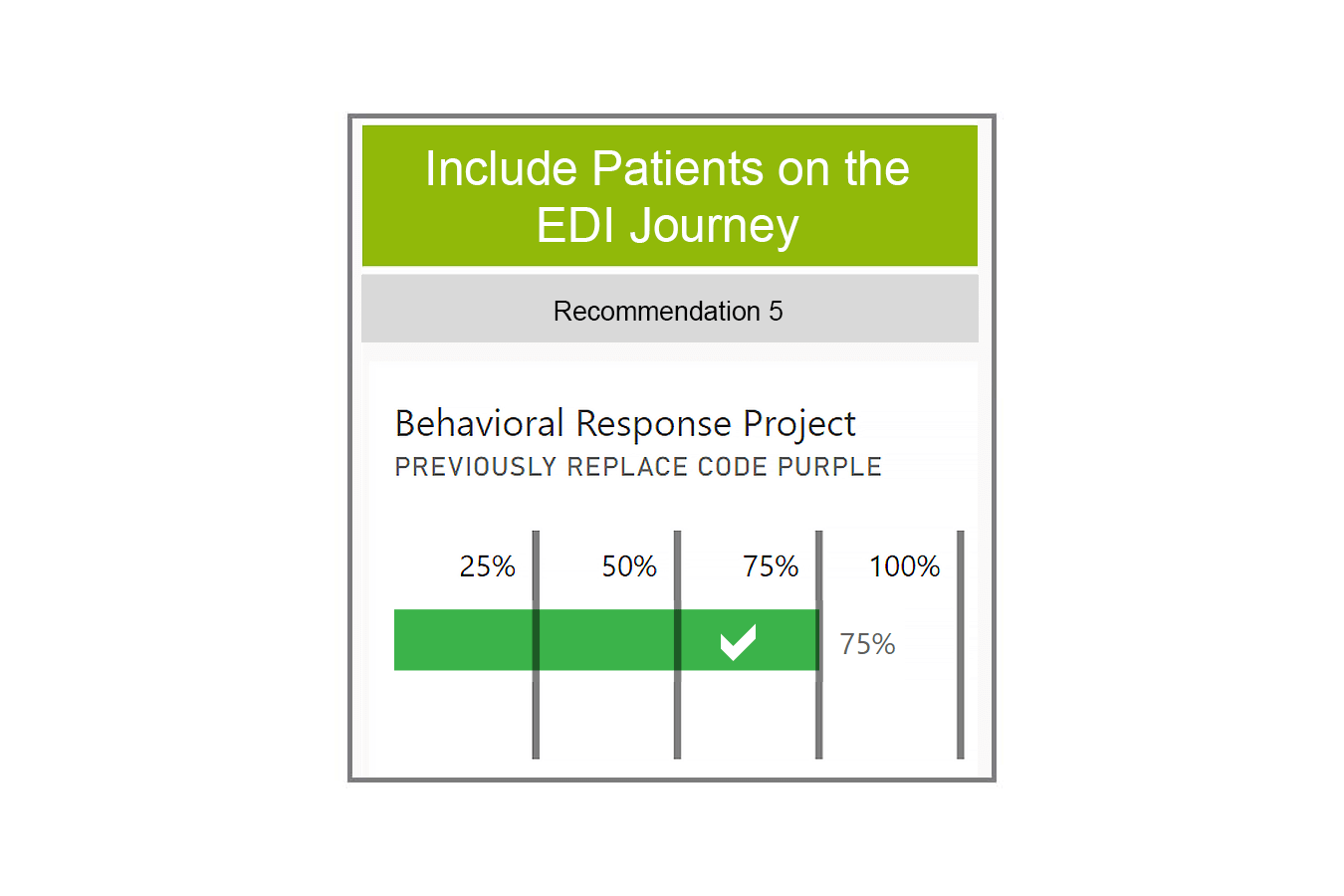
FY22: The Behavioral Response Project will replace Code Purple with an equitable and anti-racist structure that is co-created with patients and families to ensure it is culturally responsive and provides psychosocial support.
Developed phased implementation plan, planning to launch in the Psychiatry and Behavioral Medicine Unit, Emergency Department and Intensive Care Units in December 2022 with a broader launch to follow in spring 2023.
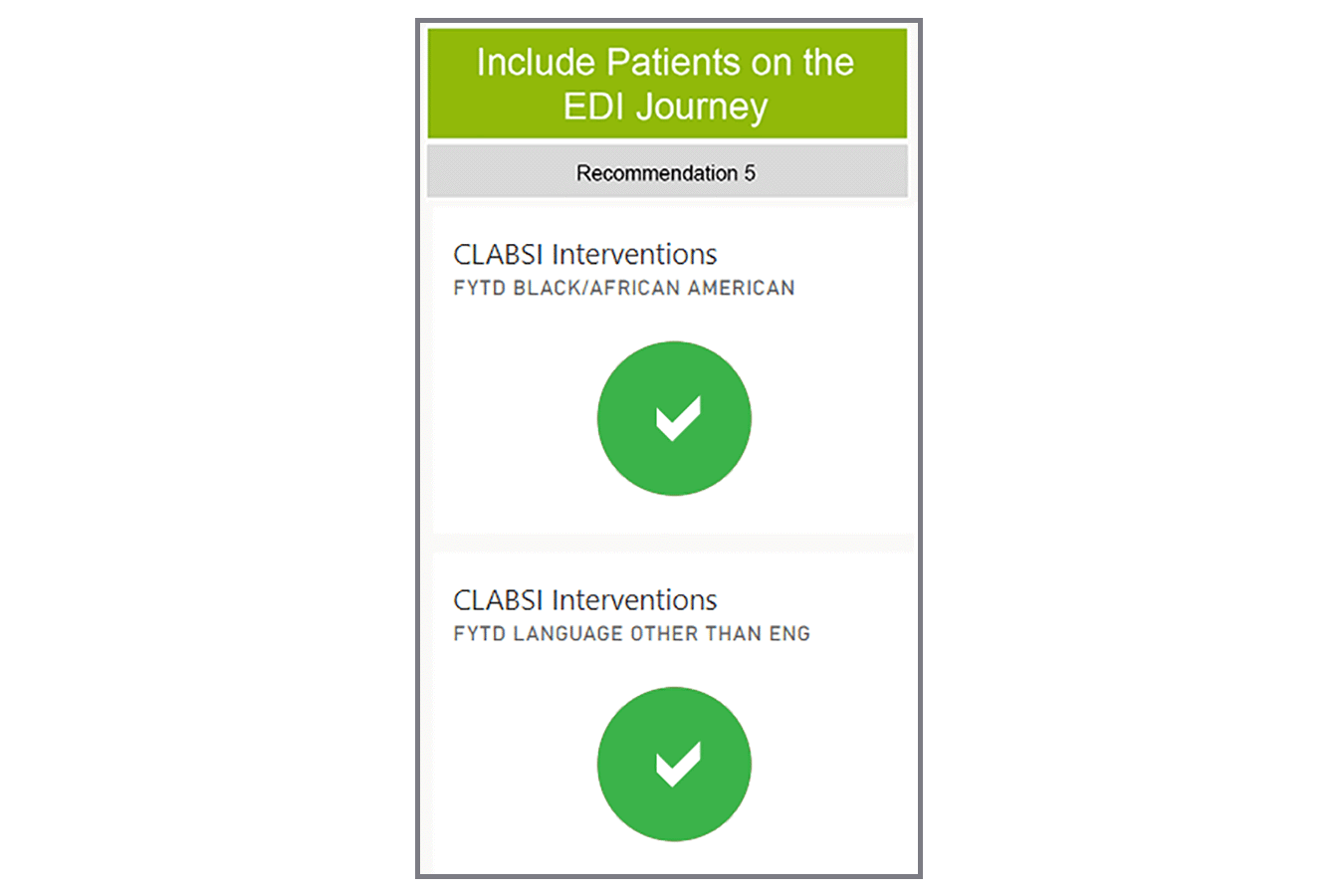
FY22: Eliminate overall non-mucosal barrier injury central line associated bloodstream infection (non-MBI CLABSI) disparities for Black and African American patients and patients who use a language other than English.
The dot color and symbol depict the completion status for the projects being implemented to reduce or avoid CLABSIs. Due to limited data and the risk of a single non-MBI CLABSI occurrence significantly skewing data, the non-MBI CLABSI rate will be reported yearly (October). Completed interventions include ensuring observation of care with central lines and transparency in data sharing with race ethnicity and language filter, and improving the formal CLABSI event review process with an equity perspective. Interventions to solicit feedback on central line care from patients who identify as Black/African American and patients who use a language other than English are in progress but behind schedule. Two line care nurses on the Cancer and Blood Disorders Unit have been have been hired and are working with families, patients and workforce members to ensure the highest line care standards. Standards have been set and are tracking adherence to use of an interpreter for every CLABSI champion audit completed. Updates to improve trainings and policies to be more inclusive and represent a variety of skin tones is in process. Additionally, while the new CLABSI Champion LEAD program has launched, staffing shortages have resulted in these roles being reassigned from central line care to bedside care. Finally, as a part of the patient and family education refresh project, videos intended for families and patients to view central line care and procedures via SeattleChildrens.org are being developed, and all videos will be translated into several languages.
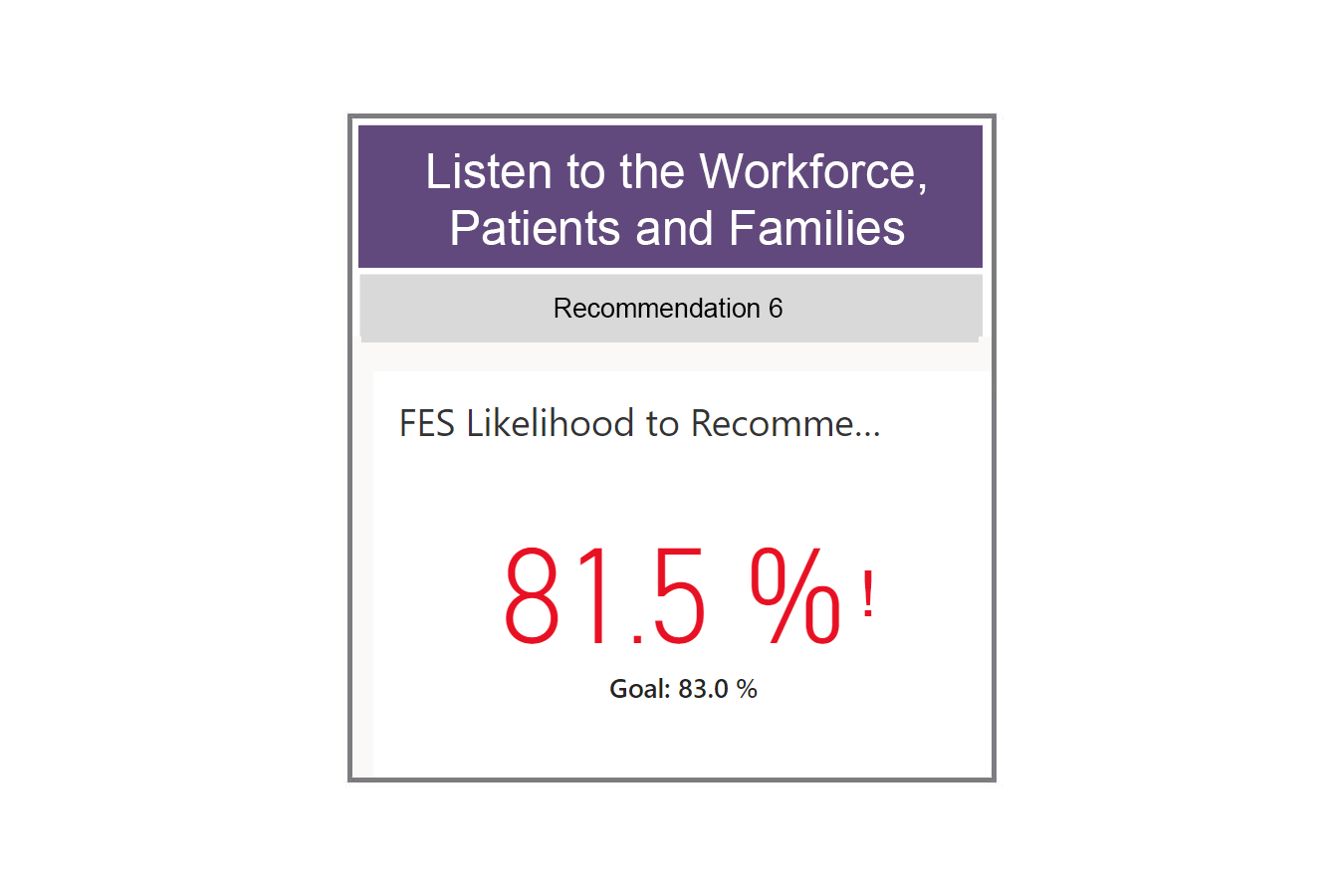
FY22: Improve the Family Experience Survey (FES) score from a baseline of 81.6% to 83.0% by Sept. 30, 2022. The target is set based on the performance of pediatric hospitals against whom we are benchmarked.
Ambulatory and inpatient results have improved in the third quarter, but unfortunately Seattle Children’s Emergency Department (ED) has struggled to maintain their earlier improvements in patient and family experience due to unprecedented volumes. A working group has formed to quickly identify ways that administrative leaders, staff and volunteers can support the ED during times of increased patient volume.
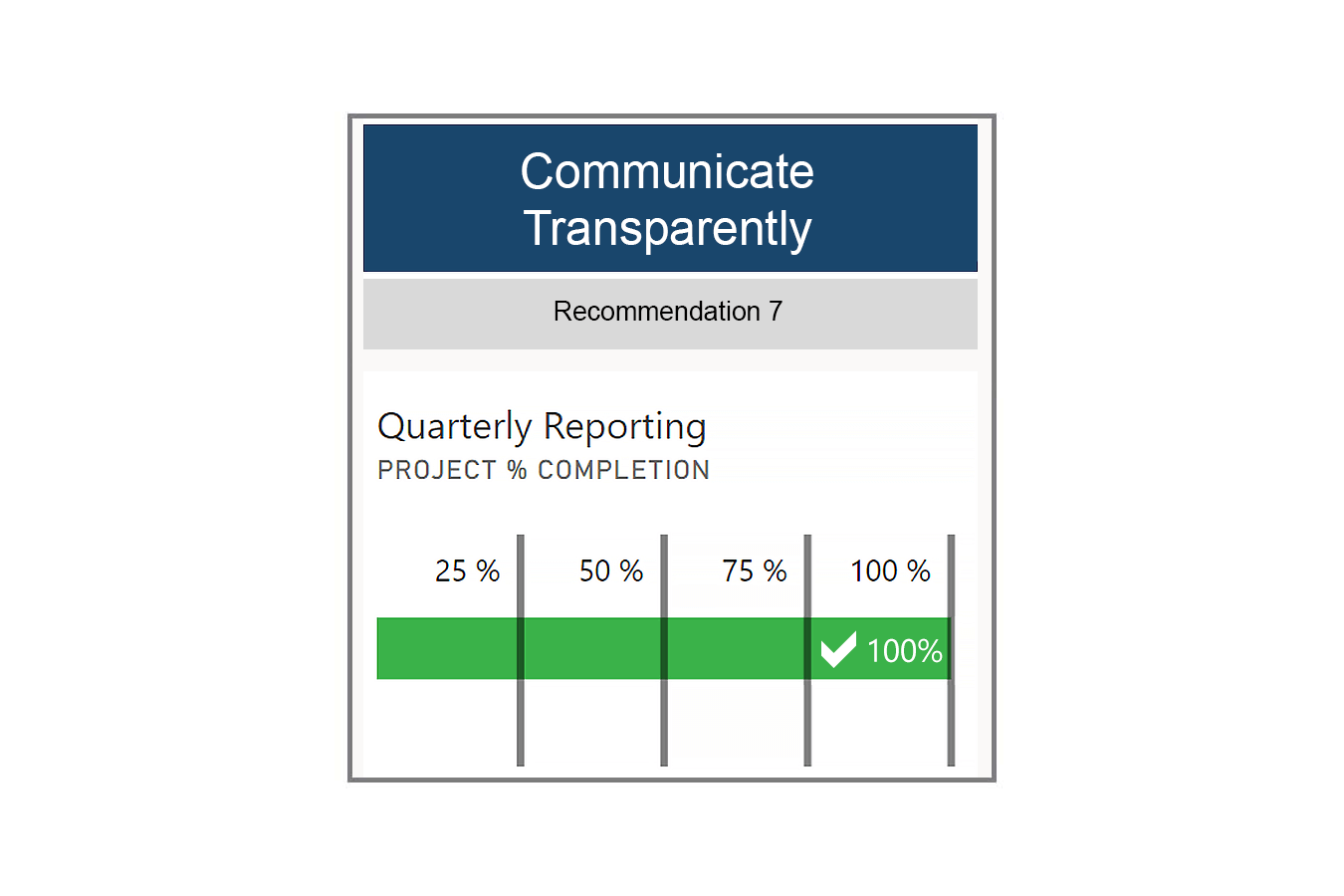
FY22 Redesign reporting on anti-racism and equity, diversity and inclusion efforts and commit to quarterly reports.
This report is the fourth quarterly report committed to as part of the Action Plan.
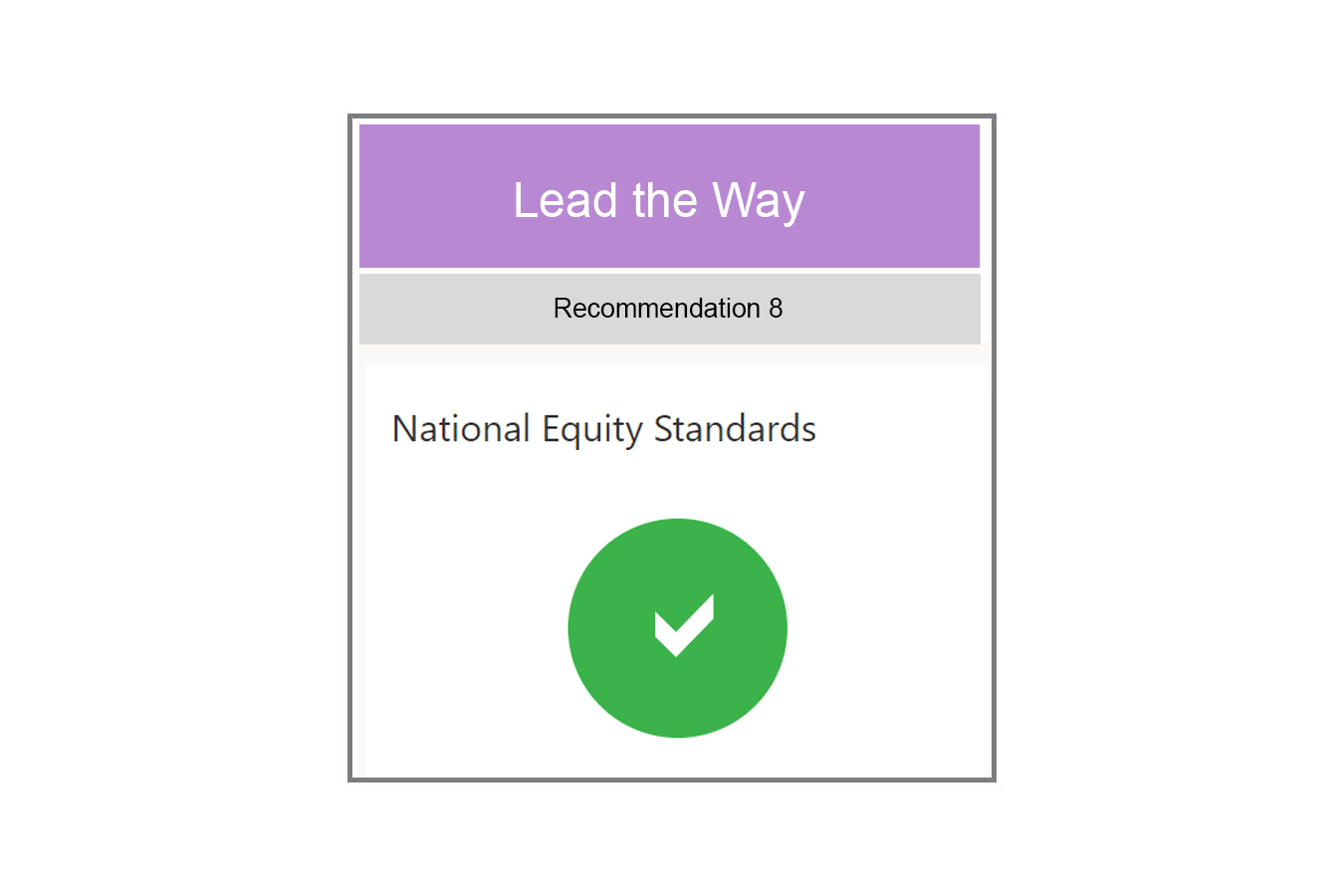
FY22: Contribute to the establishment of national health equity standards; actively engage through participation in the U.S. News & World Report Best Children’s Hospitals Health Equity/Disparities/Inclusion working group.
Representatives from Seattle Children’s, along with people from 12 other pediatric hospitals across the country, participated in a U.S. News & World Report working group tasked with recommending a methodology to evaluate equity, disparities and inclusion in overall hospital quality assessment. New measures are incorporated into the recently released U.S. News & World Report 2022 survey. 2022–2023 Best Children’s Hospitals rankings were released in June 2022. The working group has come back together per the request of USNWR to review the EDI survey questions and consider feedback from organizations in order to improve the survey for 2023–2024.
“I came to Seattle Children’s as a diversity recruiter because I wanted to contribute to the changes being made to ensure better hiring improved retention rates. Diversity can’t be a superficial expression of support, but rather actionable steps that create an inclusive environment, representative of our patient population. From partnering with community organizations like CareerWork$ and Vocational Rehabilitation (DVR) so that more people of all abilities and backgrounds have a seat at the table, to advocating for more diverse representation in the images on our careers pages, I’m proud to lend my expertise and lived experiences to conversations and actions that helped reach our 40% diversity goal.”
– Jessica Buckner, Senior Healthcare Recruiter–Diversity Channels

Diverse representation across all levels of the organization is important as every role — not only clinical providers- contributes to Seattle Children’s culture and atmosphere and how patients and families experience Seattle Children’s. Racial and ethnic diversity has continued to increase in both the patient and employee population and the Hispanic/Latinx population remains the area where Seattle Children’s has the biggest opportunity to improve its employee population. Read more.
September 2022 web page, September 2022 (PDF) (en Español)
June 2022 web page, June 2022 (PDF) (en Español)
March 2022 web page, March 2022 (PDF) (en Español)
December 2021 (PDF) (en Español)